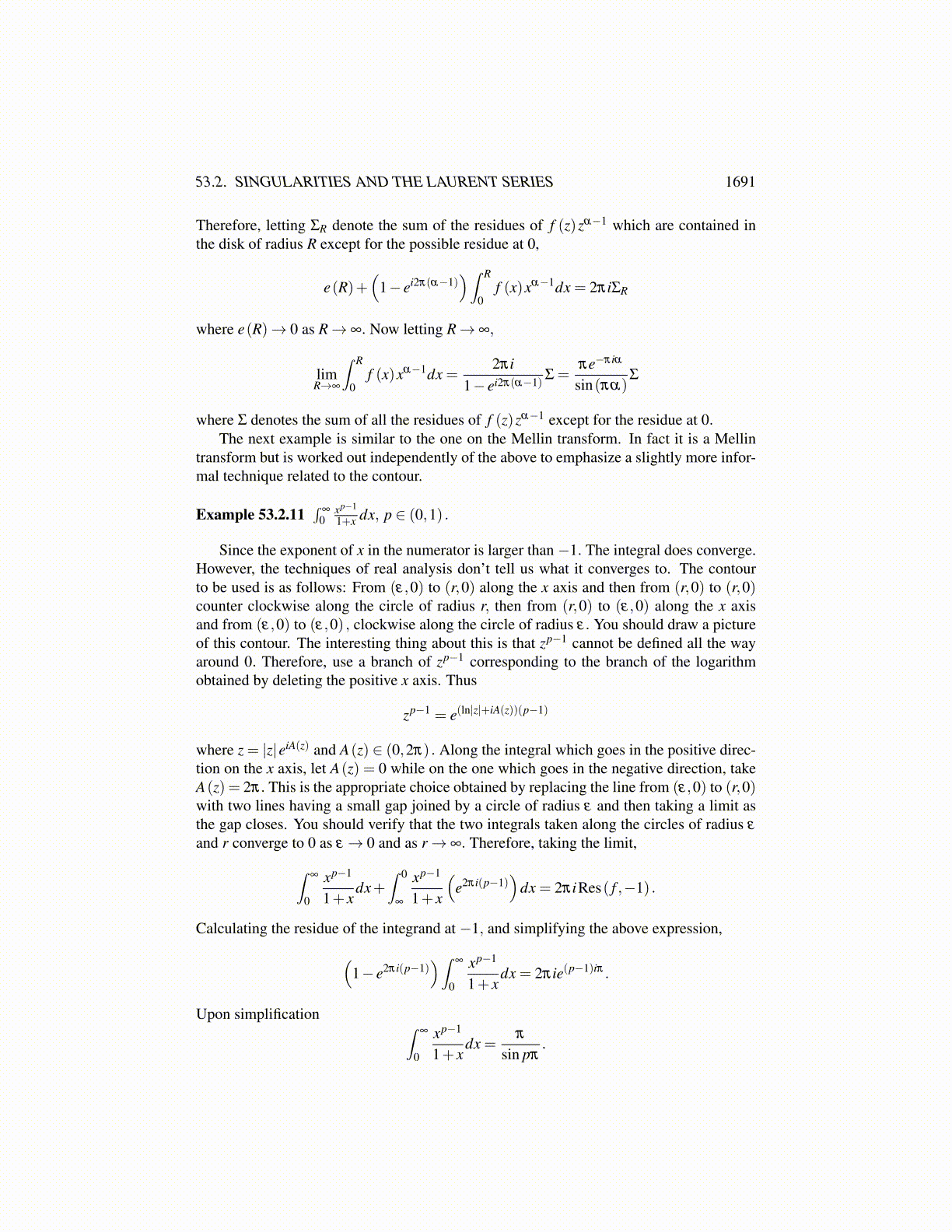
53.2. SINGULARITIES AND THE LAURENT SERIES 1691
which clearly converges to zero as r→ 0 because r lnr→ 0. Therefore, taking the limit asr→ 0, ∫
large semicircle
L(z)1+ z4 dz+ lim
r→0+
∫ −r
−R
ln(−t)+ iπ1+ t4 dt+
limr→0+
∫ R
r
ln t1+ t4 dt = 2πi
(332
√2π +
332
i√
2π +1
32
√2π− 1
32i√
2π
).
Observing that∫
large semicircleL(z)1+z4 dz→ 0 as R→ ∞,
e(R)+2 limr→0+
∫ R
r
ln t1+ t4 dt + iπ
∫ 0
−∞
11+ t4 dt =
(−1
8+
14
i)
π2√
2
where e(R)→ 0 as R→ ∞. From an earlier example this becomes
e(R)+2 limr→0+
∫ R
r
ln t1+ t4 dt + iπ
(√2
4π
)=
(−1
8+
14
i)
π2√
2.
Now letting r→ 0+ and R→ ∞,
2∫
∞
0
ln t1+ t4 dt =
(−1
8+
14
i)
π2√
2− iπ
(√2
4π
)
= −18
√2π
2,
and so ∫∞
0
ln t1+ t4 dt =− 1
16
√2π
2,
which is probably not the first thing you would thing of. You might try to imagine how thiscould be obtained using elementary techniques.
The next example illustrates the use of what is referred to as a branch cut. It includesmany examples.
Example 53.2.10 Mellin transformations are of the form∫∞
0f (x)xα dx
x.
Sometimes it is possible to evaluate such a transform in terms of the constant, α.
Assume f is an analytic function except at isolated singularities, none of which are on(0,∞) . Also assume that f has the growth conditions,
| f (z)| ≤ C
|z|b,b > α
for all large |z| and assume that
| f (z)| ≤ C′
|z|b1,b1 < α